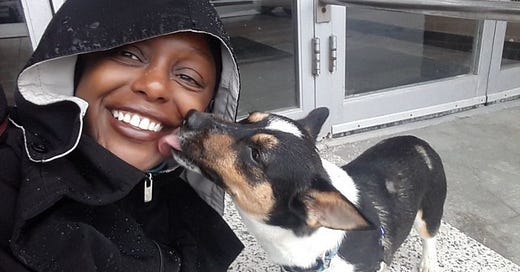
Your timing isn’t the best, but you really wanted a dog. And now you’ve found out that you’ve got one, in the middle of the coronavirus disease 2019 (COVID-19) health scare. The easy choice would be to opt out of pet adoption or turn down your friend’s puppy offer. Dog delivery puts you at risk of going outside around countless passersby and pet adoption employees before signing off on this dog’s veterinary wellness visit and exam, spaying or neutering procedure, heartworm tests, flea/tick treatments and other vaccinations. And if that’s not done, it’s your responsibility. But you’re already at home by your lonesome — or maybe with other family members — and had your heart set on getting a pet.
Recommended Read: “Walking dogs during the coronavirus scare ~ Be wary of instant Internet coronavirus experts, opt for proven results”
The truth of the matter is this health crisis shall pass, as did influenza, severe acute respiratory syndrome (SARS), H1N1 swine flu pandemic and ebola. Even the seasonal flu affects more than 1 billion people annually. And opting out now may result in you losing out on a dog you really want. You take all the proper precautions — staying at least six feet away from other two-legged folks — and now that you’ve got this dog at home, you’ve got to deal with one major conundrum. Regardless of what’s going on in the world, your dog doesn’t know it and the first few months of its life — especially as a puppy — socialization is a huge deal. Without it, you may have yourself one mean, antisocial dog.

But how do you do this when you’re already trying to dodge other people in the first place until the coronavirus numbers start decreasing (3,487 total cases yesterday and 4,226 cases today). Here are a few tips to help you socialize your dog inside your home.
ADVERTISEMENT ~ Amazon
As an Amazon affiliate, I earn a percentage from purchases with my referral links. I know some consumers are choosing to boycott Amazon for its DEI removal. However, after thinking about this thoroughly, I want to continue promoting cool products from small businesses, women-owned businesses and (specifically) Black-owned businesses who still feature their items on Amazon. As of the first date of Black History Month 2025, each new post will ALWAYS include a MINIMUM of one product sold by a Black-owned business. (I have visited the seller’s official site to verify that Amazon Black-owned logo.) I am (slowly) doing this with older, popular posts too. If you still choose to boycott, I 100% respect that decision.
Prioritize time to play with your new dog. In an ideal world, your responsible breeder has already started the dog’s socialization options in the first three months of his or her life. According to the American Kennel Club, puppies may voluntarily start coming up to people who are observing them within the first three weeks. You’re already in your own home, so make sure all of the closest family members who you need your dog to trust try to spend time with this dog. “Behavioral issues, not infectious diseases, are the number one cause of death for dogs under three years of age,” according to the American Veterinary Society of Animal Behavior.
ADVERTISEMENT ~ Amazon
As an Amazon Affiliate, I earn a percentage for each purchase with my referral links.
Introduce this dog to all kinds of sounds, smells and sights in the neighborhood. For homeowners, a trip to the backyard is an easy way to do this. For apartment dwellers, this can become a bit of a problem depending on the neighborhood. If you’re adopting a puppy, hanging out and sniffing carpet and floors (tile, linoleum, hardwood) are good ways to get your puppy moving and curious. For older dogs who aren’t particularly new to this environment, they’ll still want to check their new home out. But eventually, they’ll want to go outside. While your dog can “see” as many people as possible on various television programs, that’s just not the same as touching and/or smelling a diverse group of people.





